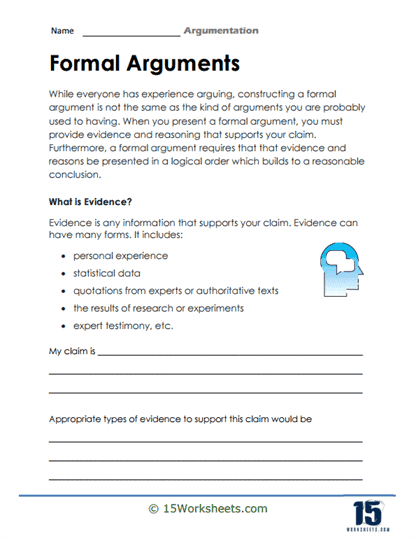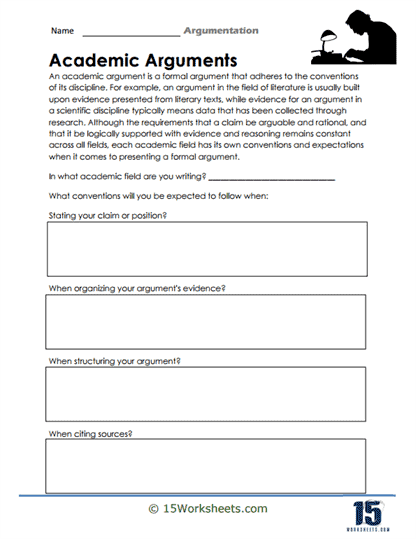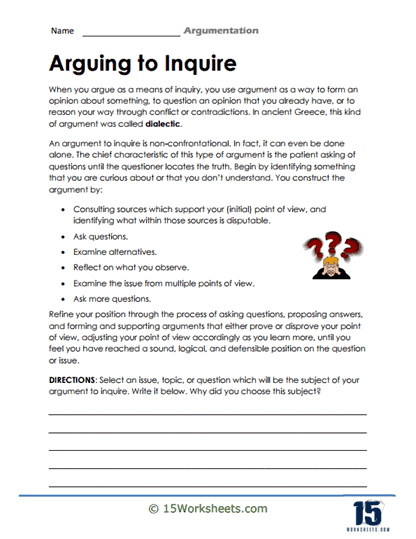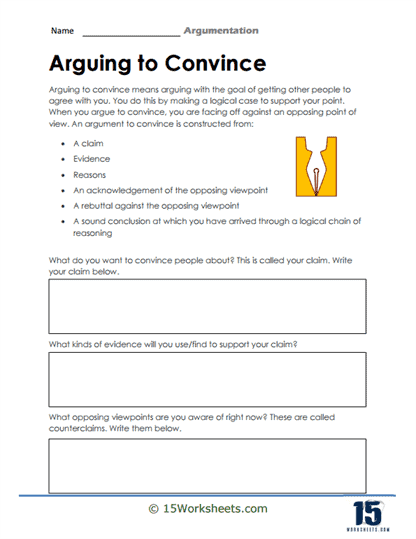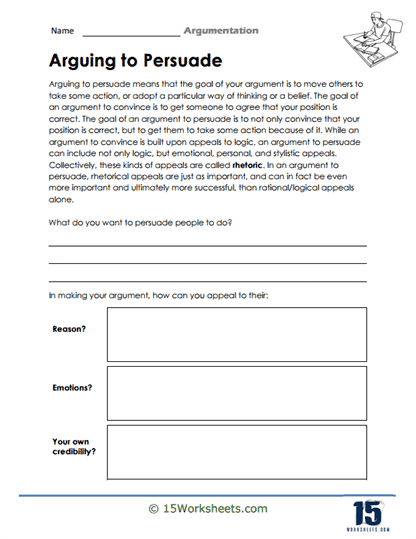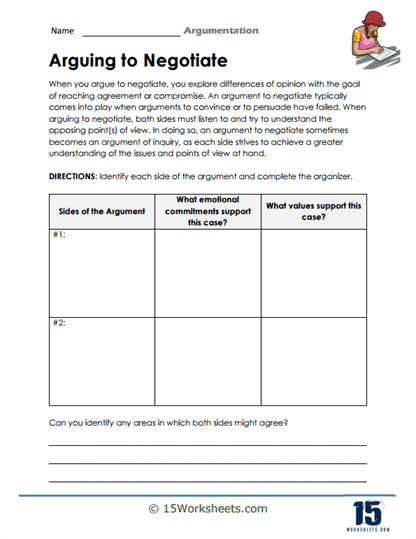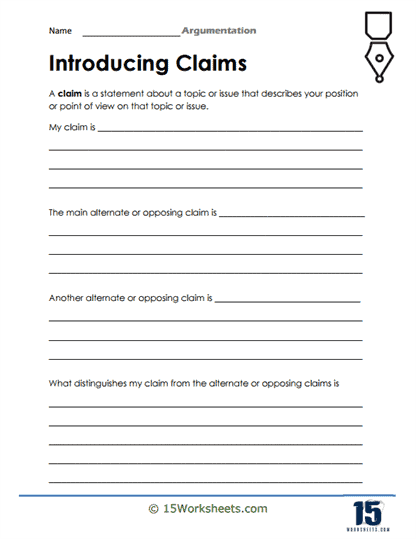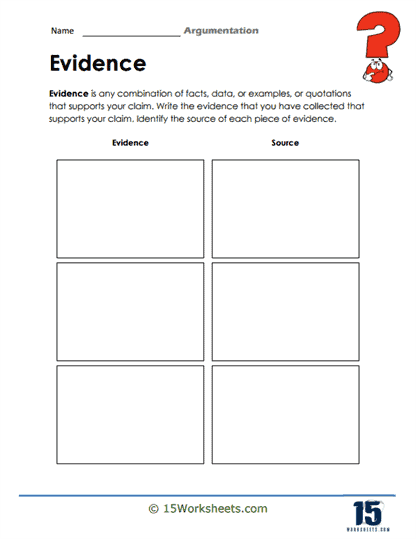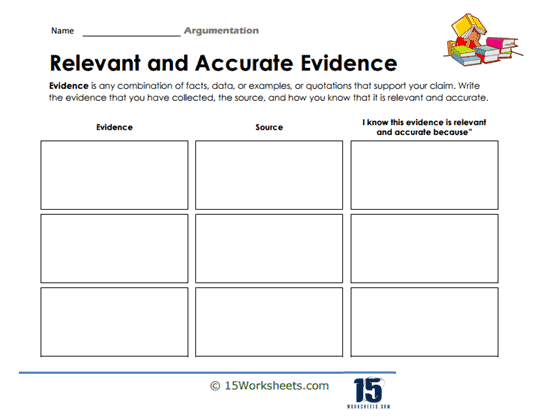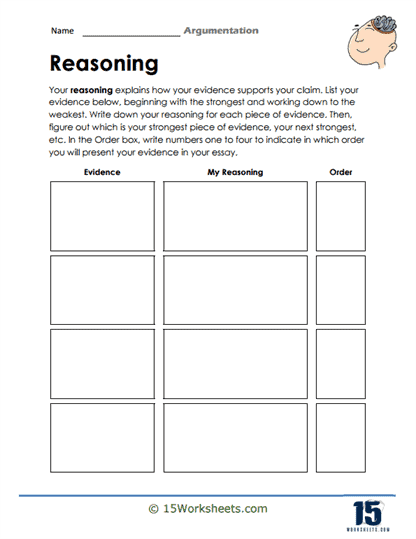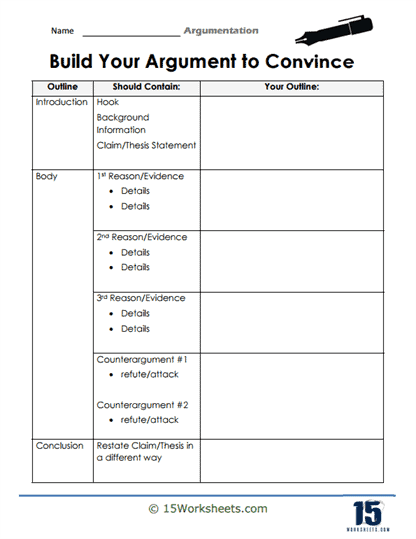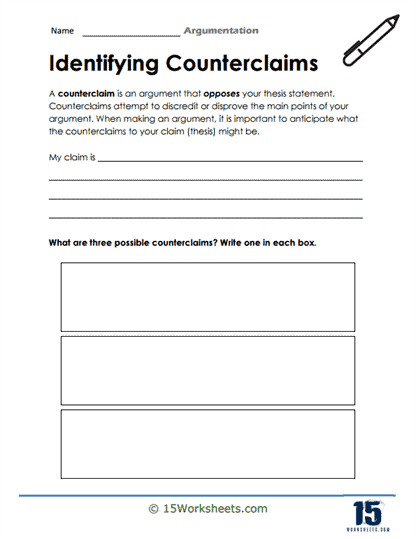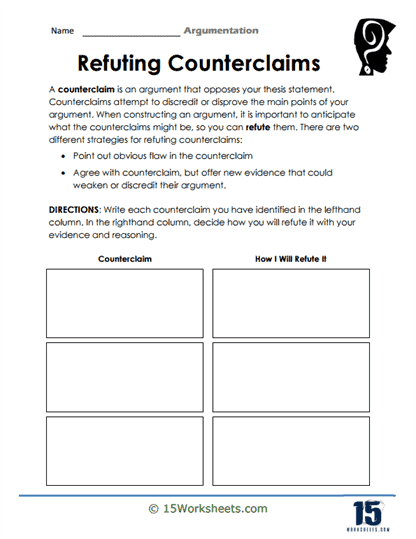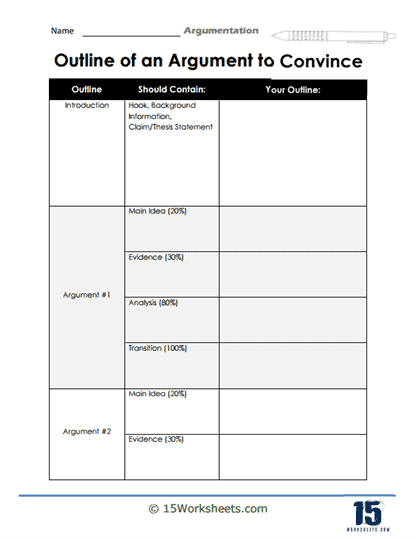Argumentation Worksheets
All About These 15 Worksheets
Students embark on a journey of persuasive writing and critical thinking with this series, a comprehensive collection of writing worksheets designed to equip students with the skills necessary to construct well-reasoned and compelling arguments. Each worksheet in this series focuses on a specific aspect of argumentation, providing step-by-step guidance and interactive exercises to enhance students’ persuasive writing abilities.
This series caters to students across different grade levels and language proficiency levels, offering a progressive range of worksheets that cover various elements of persuasive writing. By engaging with these worksheets, students develop the skills necessary to formulate persuasive arguments, critically evaluate evidence, anticipate counterarguments, and effectively communicate their ideas. Through these worksheets, students will:
- Understand the structure and key elements of a formal argument, including the claim, evidence, and reasoning, helping them establish a solid foundation for their persuasive writing;
- Learn to incorporate scholarly sources, utilize appropriate citation styles, and adhere to academic conventions when presenting their arguments;
- Approach argumentation as a means of inquiry and exploration, persuasion, or negotiation;
- Formulate clear and concise claims that express their main argument effectively;
- Evaluate the relevance, reliability, and credibility of different types of evidence, ensuring their arguments are well-supported and grounded in sound reasoning;
- And learn the importance of addressing counterarguments to strengthen their own positions and anticipate potential objections.
Overall, this series of worksheets serves as a valuable resource for teachers seeking to enhance their students’ persuasive writing and critical thinking skills. By engaging with these worksheets, they develop the abilities to construct persuasive arguments, evaluate evidence, anticipate counterarguments, and communicate their ideas effectively, empowering them to become skilled and persuasive writers.
What Is Argumentation and Why Is It Important?
There are instances when you need to justify your choices, opinions, and thoughts on an idea. This is a part of the process known as argumentation when you form reasons for a stance to support it against the ideas that oppose it or the person who is negating it. Arguments can only be won if you not only hold on to your opinion but you have evidence for it and counter-evidence for every rebuttal you face.
Importance of Argumentation
You may get into a heated argument with someone, but the argumentation is not limited to verbal attacks. Argumentative writing is a whole new field in types of writing. Many politicians, lawyers, journalists, TV anchors, and critics have acquired the argumentative skills to speak or write to persuade the audience. How do they get to do this perfectly? Learning to write argumentative essays in school and then going into debates to further nurture their skills. Writing at a basic level helps you with the process of argumentation.
Basics of Argumentation
Every critical thinker sees an argument in three ways, first is the identification of the discussion, then its analysis, and at the end comes the evaluation. There are some basics in all types of arguments that are crucial:
- The idea that you support;
- Reason to support it;
- And justification in the form of evidence, counter-evidence, or proofs.
Structure of an Argumentative Essay
Once you have gathered all the material for an argument, it is time to streamline it into an essay or a paper. To get you started, here is a structure of simple one.
1. First Paragraph: Introduction
Start with a hook sentence to grab the reader’s attention. Then give some information about the topic. Introduce the argument and then provide a thesis statement showing what side you choose to prove in this essay.
2. Second/Third/Fourth Paragraph: Body
These paragraphs are the essay’s body, which has the same structure. Each starts with a topic sentence; then, a claim is added, supported by evidence. The paragraph ends with a concluding statement that sums up the section.
3. Second last Paragraph: Rebuttal
This is similar to the other paragraphs, but it starts with the other side’s opinion and then gives a rebuttal in the form of counter-evidence. A rebuttal has many types as well; it is a type of attack which could be an irrelevance to the subject, impact on the issue, assumptions, and the truthfulness of the argument.
4. Last Paragraph: Conclusion
Restate the thesis statement in different words and summarize the arguments made in the body. End the paragraph with a concluding remark.
Effective argumentation typically includes the following elements:
- Clear thesis statement – A strong argumentative piece begins with a clear and concise thesis statement that outlines the central argument or position the writer is taking. The thesis should be debatable and specific, providing a clear focus for the essay.
- Logical structure – The argument should be presented in a logical and coherent manner, with each claim or point building on the previous one, leading the reader from one idea to the next in a way that is easy to follow and understand.
- Evidence and support – To make a convincing argument, it is essential to provide evidence and support for each claim or point. This may include facts, statistics, examples, expert opinions, or research findings from credible sources. The writer should also address counterarguments and provide evidence to refute them, demonstrating the strength of their position.
- Ethos, pathos, and logos – Effective argumentation often employs these three rhetorical appeals. Ethos involves establishing the writer’s credibility and authority on the subject. Pathos appeals to the reader’s emotions, values, or beliefs. Logos uses logical reasoning and evidence to persuade the reader of the validity of the argument.
- Clear and persuasive language – An argumentative piece should be written in clear, concise, and persuasive language. The writer should use appropriate vocabulary and sentence structure to communicate their ideas effectively and maintain the reader’s interest.
- Strong conclusion – A well-crafted argumentative essay concludes with a strong closing statement that reinforces the thesis, summarizes the main points, and leaves the reader with a lasting impression or a call to action.
By incorporating these elements, a writer can create a compelling argument that effectively engages and persuades the reader. Argumentation is a critical skill in writing, as it is used in various forms of academic essays, research papers, op-eds, and other persuasive writing genres.

